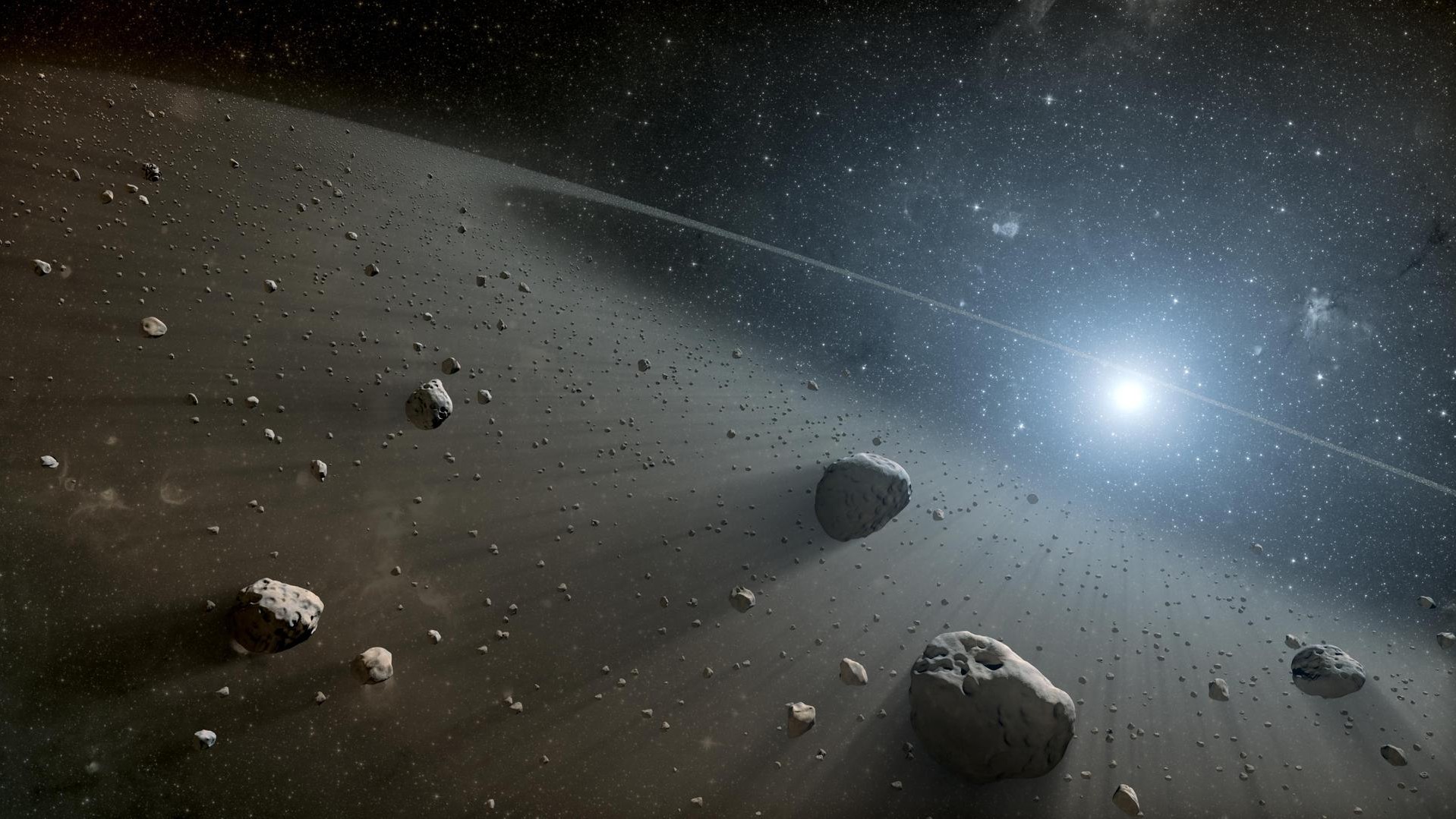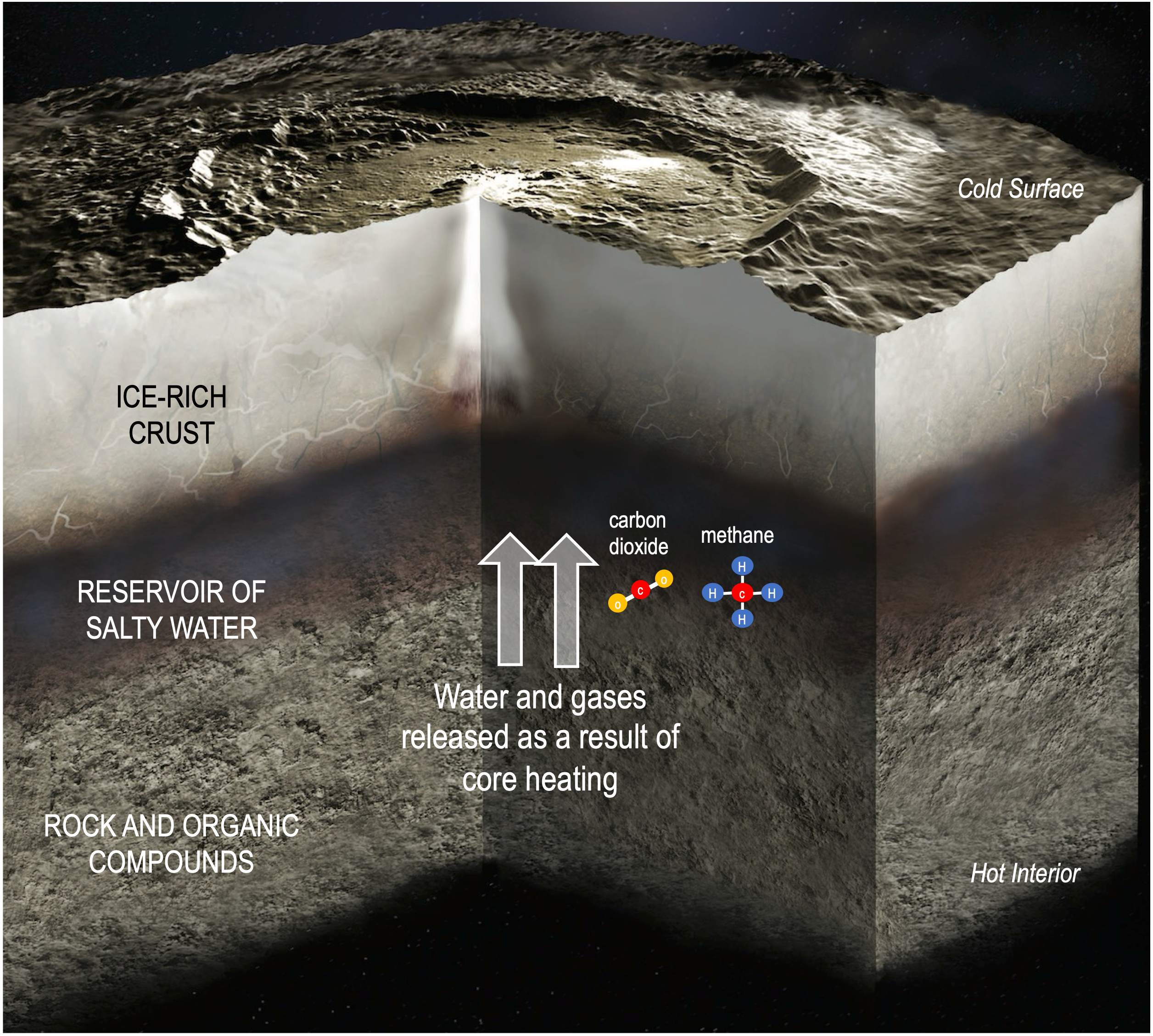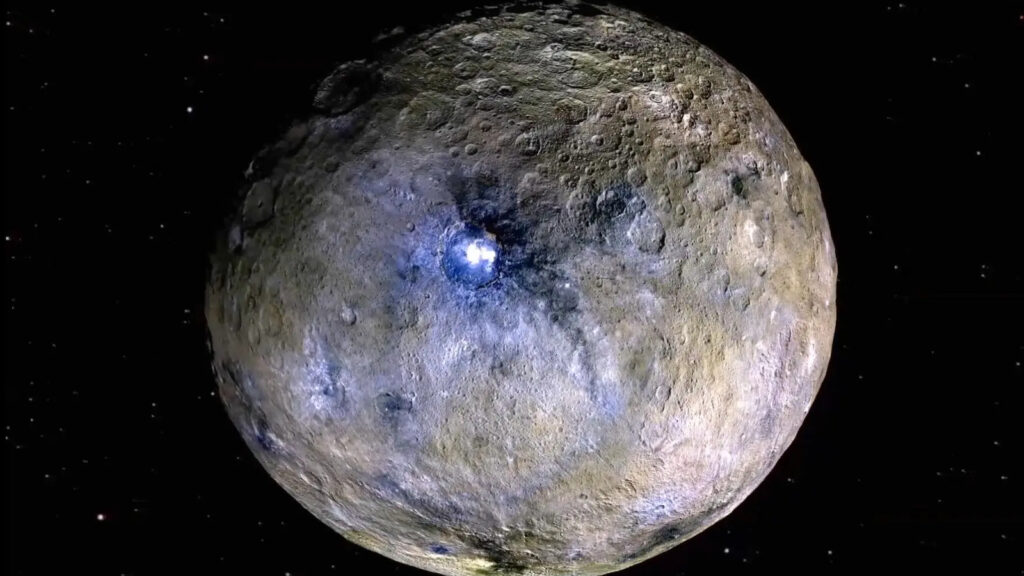New NASA research hints that Ceres — the closest dwarf planet to Earth — may have once had an ancient “power source” that could have sparked the evolution of extraterrestrial life-forms in the tiny world’s hidden ocean.
Ceres is the largest object within the solar system’s main asteroid belt, which is located between the orbits of Mars and Jupiter. The wee world is around 600 miles (950 kilometers) wide, roughly one-quarter the moon‘s diameter, meaning it is not large enough to be considered a planet. But it is large enough to be considered a “dwarf planet” like Pluto, which lost its full planetary status in 2006.
In recent years, scientists have learned a lot about Ceres thanks to NASA’s Dawn probe, which visited the object between 2014 and 2018. One of the most intriguing discoveries from the Dawn mission is that the giant space rock is likely a water world: Traces of water and salty minerals on the dwarf planet’s icy surface suggest a large reservoir of brine is trapped miles below. Other studies have hinted that this underground ocean could also contain organic carbon, which is a key component of all life on Earth.
However, until now, scientists thought that life was unlikely to have emerged on Ceres because the dwarf planet has no energy source capable of kick-starting life.
But in a new study, published Aug. 20 in the journal Science Advances, researchers revealed this was not always the case.
Related: James Webb telescope spots potential conditions for life on 2 dwarf planets beyond Neptune

The study team created computer models based on data collected by the Dawn mission to simulate how the rocky body’s core changed over time. This revealed that the dwarf planet’s innards probably used to emit large amounts of energy in the form of heat — raising hopes that tiny alien microbes could have emerged within Ceres’ hidden ocean.
This could also have “big implications” for the potential of finding life in other parts of the solar system, study lead author Samuel Courville, a planetary scientist at Arizona State University and a former intern at NASA’s Jet Propulsion Laboratory, said in a NASA statement.
The researchers believe that Ceres’ core once emitted significant amounts of heat from the gradual decay of radioactive isotopes. The team believes that this heating lasted between 0.5 and 2 billion years after the giant rock was created, which was likely shortly after the rest of the solar system, around 4.6 billion years ago. At its hottest, the core likely reached around 530 degrees Fahrenheit (280 degrees Celsius), the researchers wrote.
This is not the first time that scientists have proposed that Ceres had a radioactive core. However, this is the best evidence yet that it generated enough heat to potentially support life.

In addition to heating the dwarf planet’s subsurface ocean to a habitable temperature, the radiation could also have caused jets of hot, mineral-rich water to shoot up through the ocean’s floor, similar to the hydrothermal vent systems on Earth that support diverse microbial communities in the crushing dark depths of our oceans.
“On Earth, when hot water from deep underground mixes with the ocean, the result is often a buffet for microbes — a feast of chemical energy,” Courville said.
Astrobiologists have proposed that similar systems may support extraterrestrial life on other water worlds in the solar system, including Saturn‘s moons Enceladus and Titan, as well as Jupiter’s moons Europa and Ganymede.
However, since Ceres’ radioactive core went dead around 2.5 billion years ago, any alien microbes would likely have died out from the cold, meaning there is practically zero chance that the dwarf planet supports life today, the researchers said.
